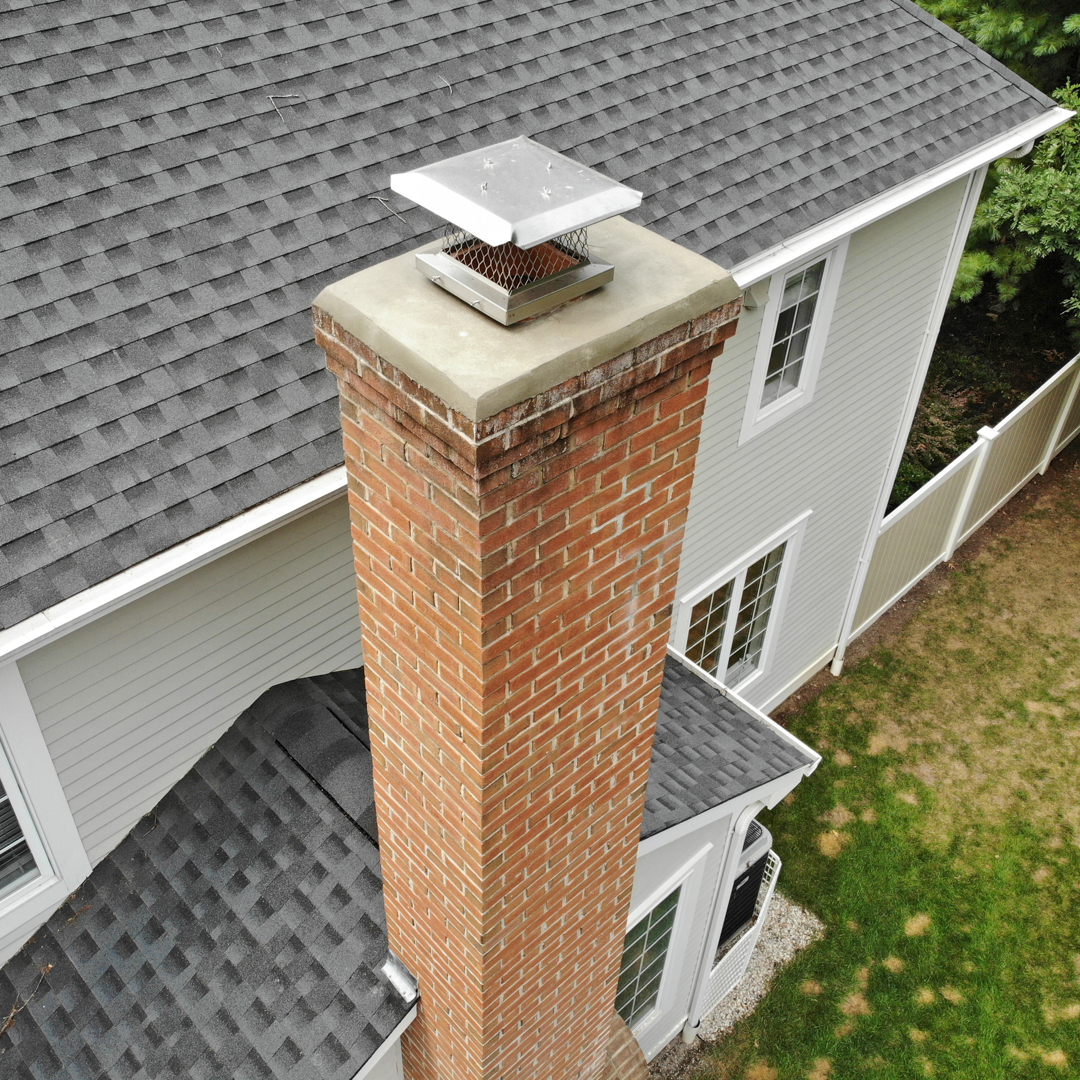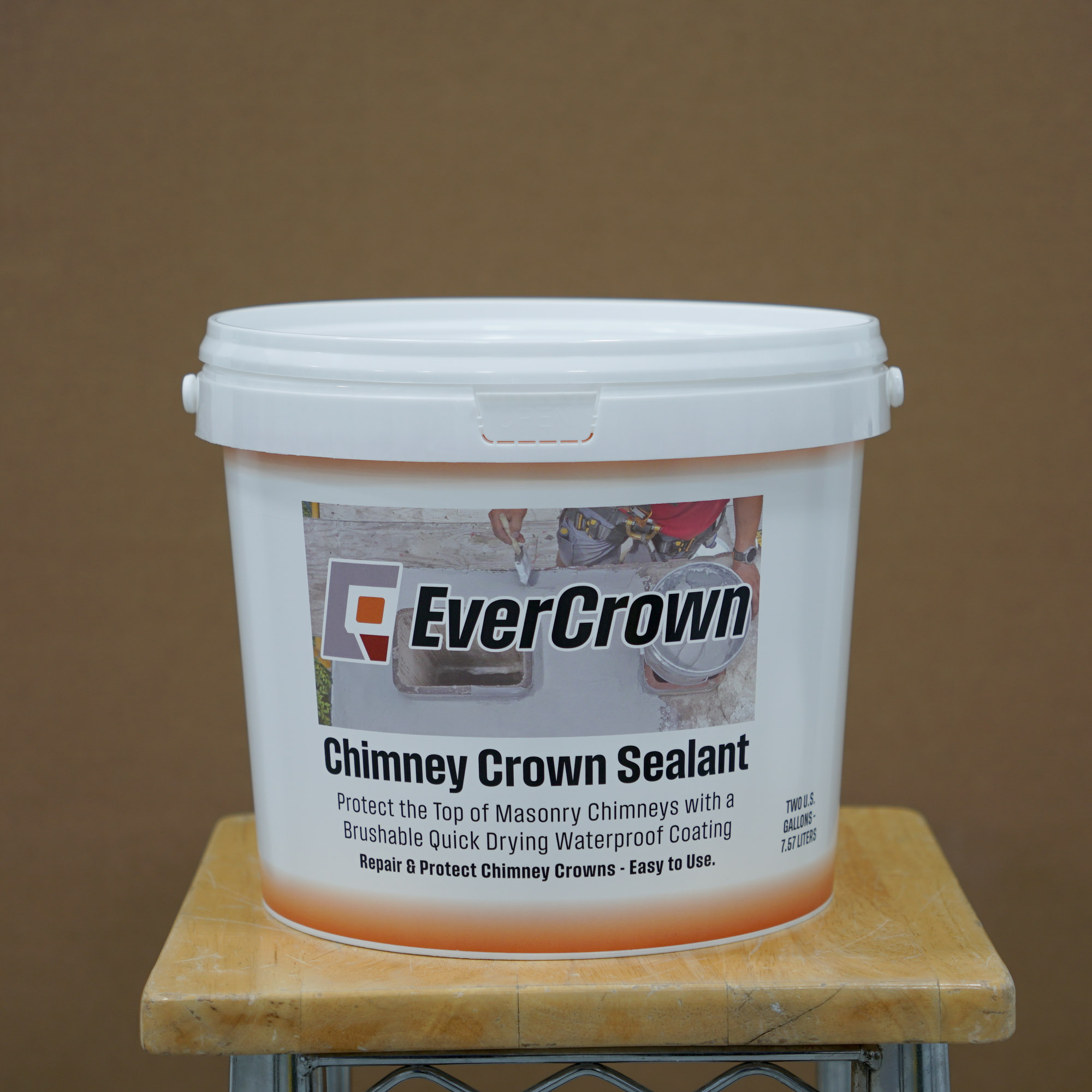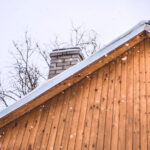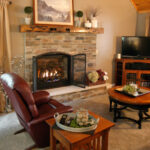What is The Purpose of a Chimney Crown?
Have you ever looked at your chimney and noticed a solid concrete slab perched at the top? Even if you haven’t, chances are that the birds have. That intriguing piece is known as the chimney crown. But what exactly does a chimney crown do? Stick around to uncover its essential role and why it matters for your home.

What Is a Chimney Crown and Why It Is Necessary?
A chimney crown is a concrete slab at the top of the chimney, sealing the area surrounding the exposed flue pipe. A properly built crown is sloped with a 3″ drip edge that overhangs the masonry. Its primary function is to divert rainwater from the chimney structure.
Chimney Crown Vs. Cap
While chimney crowns and caps are designed to deflect water from the chimney, they serve different purposes.
- A chimney cap typically covers only the flue openings, preventing debris, animals, and rain from entering the flue.
- In contrast, a chimney crown is a broader, solid structure that covers the entire top of the chimney, extending beyond the flue and protecting the chimney’s masonry structure from the elements. Crowns are typically made of concrete but may have been constructed using leftover mortar in some cases.
4 Signs Your Chimney Crown Needs Repair
Promptly addressing even minuscule damage to your chimney crown is essential. Beyond just soot, fumes, and smoke, here are several key signs that indicate your chimney crown needs repair:
- Cracks in the Crown: The crown’s primary purpose is to prevent water from entering, but hairline cracks allow moisture to seep in, leading to issues like mortar decay, rusted dampers, and cracked flue tiles.
- Damage to Mortar Joints: When the crown cannot properly deflect precipitation, rain, snow, and ice can weaken mortar joints, exposing the masonry to harm further and potentially leading to the chimney’s collapse.
- Spalling Bricks and Rust: Spalling bricks, crown damage, and rust on the flashing, chimney cap, firebox, damper, or flue condensation suggest a moisture problem that can cause significant damage.
- Fallen Chimney Tiles and Water Pooling: The presence of fallen chimney tiles or water pooling inside or near the fireplace is a clear indication of a chimney leak and potential structural damage, often caused by cracks in the crown, deteriorated mortar, or defective flashing.
Repairing these issues early is significantly less expensive than rebuilding an entire chimney crown later.

Why Evercrown Is Best for Most Chimney Crown Repairs:
Unlike traditional repair methods that often rely on cement or mortar, Evercrown® is a flexible, proprietary bonding compound with rubber-like characteristics. It’s applied like cement but cures into a flexible, robust, waterproof barrier that seals cracks and gaps.
Key advantages include:
- Unmatched Durability: Its flexible nature allows it to withstand the constant expansion and contraction caused by temperature fluctuations, significantly reducing the risk of future cracking, a common issue with rigid materials like concrete.
- Superior Protection: Evercrown® forms an impenetrable barrier against moisture, preventing water from seeping into the chimney and causing costly damage such as mold growth, structural instability, and pest infestations. It is waterproof, weatherproof, and UV-resistant, protecting against rain, snow, ice, and the sun’s harmful rays.
- Long-lasting Results: Engineered for longevity, Evercrown® ensures year-round protection, extending the lifespan of masonry chimneys and delaying costly rebuilds.
- Cost-Effective: It offers a durable, cost-effective alternative to traditional repairs, minimizing recurring maintenance.
Professional Chimney Crown Repairs with 10-Year Warranty
Evercrown® comes with an outstanding 10-year limited warranty, provided it is applied according to the manufacturer’s instructions. Many professional chimney service providers offer Evercrown® repairs to protect your chimney and enhance your home’s value. Contact us today to locate a factory-authorized dealer/technician near you.



